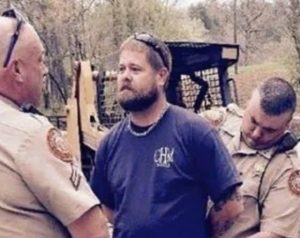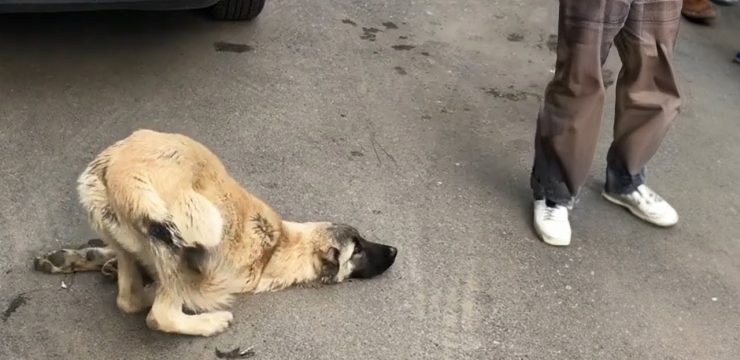In Gainesville, Georgia, a grieving father has turned his personal tragedy into a public mission to save lives. Shannon Hamilton, a local resident and dedicated father, faced the unthinkable when his 16-year-old daughter, Cecily, was killed in a car accident. Her vehicle veered off a bridge and plummeted into a river. The horrific crash left the community in shock and left Hamilton heartbroken. But instead of remaining silent in his grief, Hamilton took action—driven by sorrow, frustration, and a desire to prevent other families from suffering the same pain. Cecily’s accident didn’t just seem like a tragic misfortune to Hamilton. He strongly believed that it was avoidable. According to him, the lack of a guardrail on that bridge was a critical factor contributing to the crash. In his eyes, Cecily’s death was not just a result of an accident—it was a result of inaction. Although plans were already underway to install a permanent guardrail, Hamilton felt the timeline wasn’t fast enough. Bureaucratic red tape, paperwork, and delays meant that the hazard would remain for weeks or even months, leaving the possibility of another fatal crash open.

Unable to bear the thought of another family going through what he did, Hamilton decided to take matters into his own hands. He wasn’t a politician or an engineer—he was a father, and he had an excavator. Using his construction equipment, he began building a makeshift barrier at the site of the accident. His goal wasn’t to defy authority but to provide immediate protection while the state completed their official work. However, his well-intentioned actions were not met with understanding by law enforcement. Authorities warned him that he was trespassing and interfering with state property. But Hamilton, fueled by grief and urgency, kept working. He felt the risk of doing nothing was far greater than the risk of consequences. Eventually, his persistence led to his arrest—an arrest that unfolded right in front of his younger son, adding another layer of emotional trauma to the situation. Hamilton posted bail shortly after, but the moment left an impression on the community and reignited the conversation about road safety and governmental response times.
What followed was a wave of support from neighbors, friends, and strangers who admired Hamilton’s determination. People from across Gainesville and beyond reached out with messages of solidarity. Many shared stories of their own close calls on that same bridge or expressed anger that it took a teenager’s death to spur action. Local residents agreed that Hamilton’s urgent call for safety improvements was justified, even if his method broke the rules. The emotional force of Cecily’s story moved many to advocate alongside him. While grief might have initiated his fight, Hamilton didn’t stop at just building a temporary structure. He shifted his focus toward advocacy and education. He began speaking out at Cecily’s school and within the community, encouraging young drivers to stay alert, follow safety measures, and appreciate the serious responsibility of driving. His message wasn’t just about guardrails anymore—it became about awareness, caution, and the importance of proactive change.
Hamilton’s campaign brought the bridge’s safety concerns into the spotlight. Local officials, likely prompted by both public pressure and the emotional weight of Cecily’s story, expedited the process of installing a permanent guardrail. What had once been a low-priority infrastructure project suddenly became an urgent necessity. Thanks to Hamilton’s actions, the area is now considerably safer, and drivers crossing that bridge are protected by a barrier that might not have existed so soon without his intervention. Cecily’s death, while tragic and irreversible, has not been in vain. Her father’s raw emotion, courage, and refusal to sit by idly have sparked tangible change. It’s the kind of action that reminds a community of its shared responsibility to protect one another. While many would have felt powerless in such a situation, Hamilton channeled his heartbreak into advocacy. His story is a testament to how personal loss can drive public good and how one individual’s determination can push systems into motion that often move too slowly.
Hamilton’s efforts also opened a broader conversation about community involvement in infrastructure safety. His story serves as a reminder that sometimes, citizens see danger where officials fail to act swiftly. And while his method of building a temporary structure without permission was unorthodox, the urgency behind it highlighted a significant issue with how long it takes for infrastructure improvements to be implemented. As his story spread, parents, teachers, and concerned residents began paying closer attention to the condition of local roads, bridges, and school zones. Conversations emerged about better signage, stricter speed enforcement, and the need for emergency response protocols in areas where young drivers frequent.
Through it all, Hamilton never tried to paint himself as a hero. He simply called himself a father doing what he thought was right. In interviews and public statements, he made it clear that he wished things had been different—that he could trade all the guardrails in the world to have Cecily back. But since he couldn’t, he was determined to make her life—and her loss—matter in a bigger way. That mindset has resonated deeply with others, turning his personal heartbreak into a communal call to action. His message is both painful and powerful: change doesn’t always come from official channels. Sometimes, it starts with a dad, a backhoe, and a promise that no other child should have to die from something that could have been prevented. Hamilton’s journey is far from over. He continues to work with local officials to ensure other dangerous areas are identified and addressed before another tragedy occurs. He has also begun speaking with other parents who have experienced similar losses, offering them not just empathy, but a roadmap for channeling their grief into meaningful action. As Cecily’s name becomes associated with real safety changes in Gainesville, her memory lives on—not just in her father’s heart, but in every driver who now crosses that bridge more safely because of him.





